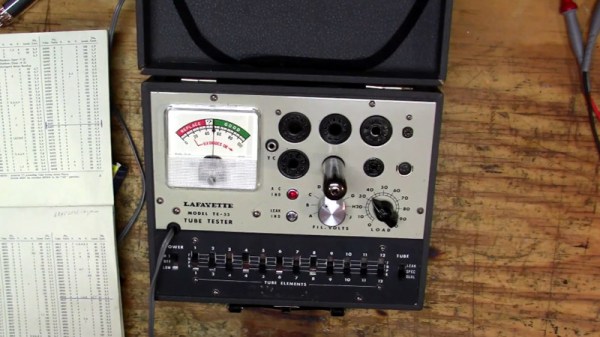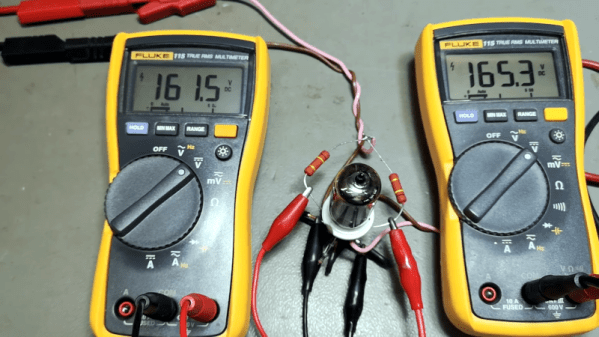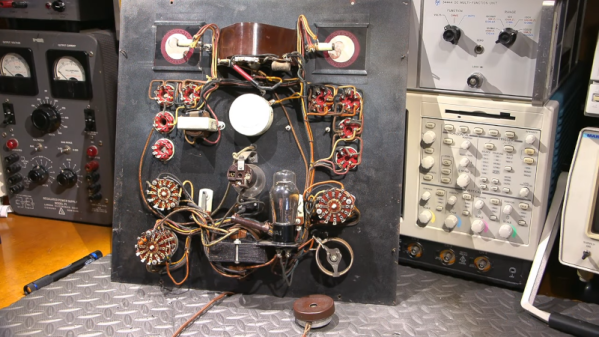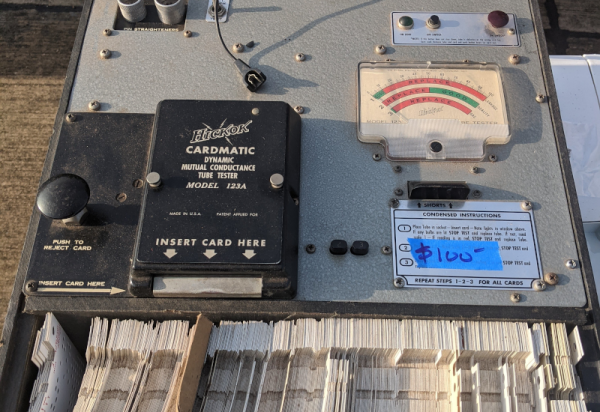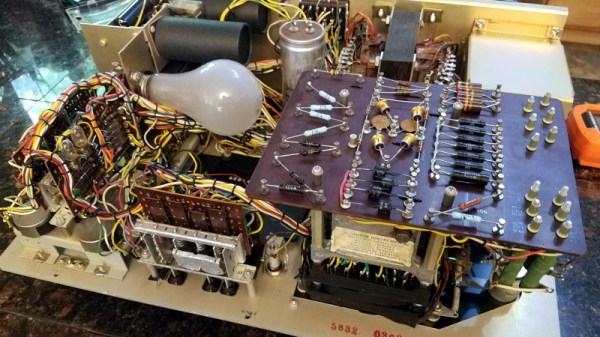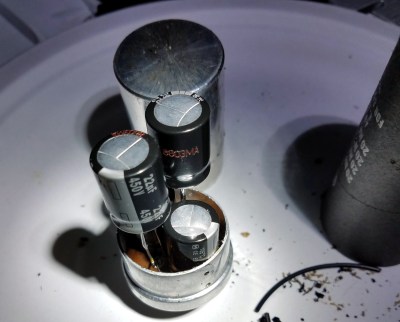There’s still a mystique around vacuum tubes long after they were rendered obsolete by solid state devices, and many continue to experiment with them. They can be bought new, but most of us still come to them through the countless old tubes that still litter our junk boxes. But how to know whether your find is any good? [Rob’s Fixit Shop] took a look at a tube tester, once a fairly ubiquitous item, but now a rare sight.
To look at it’s a box with an array of tube sockets, a meter, and a set of switches to set the pinout for the tube under test. We expected it to use a common-cathode circuit, but instead it measures leakage between the grid and the other electrodes, a measure of how good the vacuum in the device is. In a worrying turn this instrument can deliver an electric shock, something he traces to a faulty indicator light leading to the chassis. We are however still inclined to see it as anything but safe, because the lack of mains isolation still exposes the grid to unwary fingers.
All in all though it’s an interesting introduction to an unusual instrument, and given a suitable isolating transformer we wouldn’t mind the chance to have one ourselves. If you need to test a tube and don’t have one of these, don’t worry. It’s possible to roll your own.

